“One in 10 women misses one to three days of work each month because of debilitating menstrual cramps. “Sound Medicine” field producer Andrea Muraskin was one of those women. After trying every recommended medical treatment, Muraskin finally found relief from a massage therapist. Megan Assaf of Bloomington, Ind., specializes in the Arvigo Techniques of Mayan Abdominal Therapy®, which focuses on the idea that a displaced uterus can impede circulation, compromise nerve pathways and block the flow of energy through the body. According to OB-GYN specialist Men-Jean Lee, M.D., the relaxation that Mayan massage promotes could be useful in reducing menstrual cramps. Dr. Lee also says that the Arvigo Technique can promote stretching and increase blood flow, both of which can ease cramps.”
Fellow Arvigo Techniques of Maya Abdominal Therapy® (ATMAT) practitioner Megan Assaf and Dr.Men-Jean Lee, M.D. were interviewed by Andrea Muraskin regarding the effects abdominal massage has on relieving menstrual cramps. Listen to the very interesting interview and see some cool ultrasound images of the uterus during an ATMAT self-care massage- click here.
The following are my thoughts regarding some questions that were posed during the interview.
I found Men-Jean Lee, M.D’s response that there may not be a natural position for the uterus interesting. She mentioned that if you examined the uterine position of prepubescent girls, you may find varying degrees of uterine positions. This may be so, but that doesn’t mean that it’s natural in women who are of childbearing age. I believe that if there are varying degrees of positions in prepubescent girls it may be due to the stage of development. My rationale for this line of thinking is that the uterus is influenced by hormones. The uterus changes position in response to puberty and menopause. Another possible cause may be the fact that prepubescent girls are still growing which may have an influence on positioning. Varying uterine position in any stage of a woman’s life could be related to how they move, stand and sit. We no longer use our bodies the way they were designed to be used. Other contributing factors to a shifted womb may be a personal history of falls, accidents, pelvic alignment, and bowel function. Common doesn’t always equate to what is natural, as in the way nature intended. Dr. Lee poses the question, “How do we know retroversion is not normal?” We don’t know exactly the degree of retroversion she was referring to, but I don’t think that our bodies are designed in a way that would impede organ function and cause pain. Common symptoms of retroversion may be painful intercourse, menstrual pain, varicose veins, constipation, painful defecation, hormonal imbalance and back pain. Read more on retroversions here.
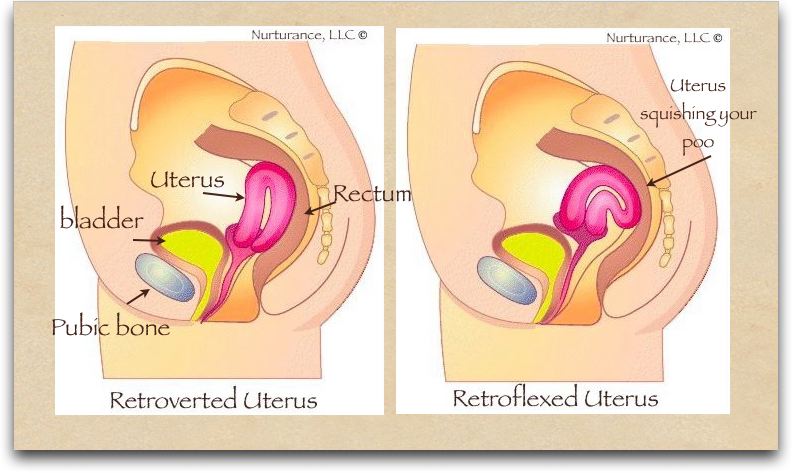
examples of tipped uteri
Another possibility to varying degrees of uteri is the fact that the uterus is designed to move. The uterus is meant to move slightly in many directions depending on extrinsic factors as well as the innate intrinsic motions of the womb. Physiologic balance is dependent on these free flowing movements. The problem is when the uterus has shifted to a degree that results in organ dysfunction. Or when it is in a fixed position.
Other than improving blood, lymph, energy and nerve flow, abdominal massage or Visceral Manipulation™ can also decrease excess loads from other organs that have prolapsed or shifted. Removing these forces allows the reflexogenic ligaments to return to their natural length and allows the uterus to be in the ideal range of natural position which is slightly off center to the right and over (but not leaning on) the bladder.
Uterine ligaments (UL) have different characteristics than say the ligaments of the knee that is comprised of denser connective tissue. UL consist of a blend of skeletal muscle, smooth muscle, hormonal receptors, three types of collagen and blood vessels. These specialized ligaments have reflexogenic qualities. Because of the reflexogenic properties, the uterus can move to some degree without damaging the ligaments.
On another note, ligaments need a proper direction of load to stimulate the correct balance of collagen production. One of the main supporting ligaments of the uterus is the uterosacral ligament (USL), and if it isn’t loaded correctly because you are sitting on your tailbone (post tilted pelvis) the ligaments lose their strength and resiliency. How can the USL suspend the uterus if the uterus is sitting on the USL? It can’t!
I like how Katy Bowman, biomechanical scientist, explains how pelvic position affects the uterine position. “your uterus is like a puppet on a string (the uterosacral ligament) in the hands (the sacrum) of the puppeteers — the pelvic floor and the glutes. The habit of wearing a tucked pelvis all day creates a droopy puppet uterus, susceptible to chronic malpositioning.”
There are times when the USL have exceeded their load and will not return to the original length and resiliency. When ligaments repair they undergo a remodeling with collagen scarring. Unfortunately, there isn’t a test to see if there is actual damage to your uterine ligaments. This doesn’t mean that if your ligaments have been damaged you won’t benefit from abdominal therapies. These techniques may not fix your damaged ligaments but can help with hemodynamics in the pelvis and lessen your symptoms. The uterus may even move to a better position from where it was, say to a lesser degree of prolapse for instance. It has been my experience that working on pelvic alignment coupled with abdominal therapies (ATMAT, Visceral Manipulation™, and/or Chi Nei Tsang) and being consistent with self-care massage has always reduced if not eliminated the symptoms of a shifted uterus or congested pelvis.
“The resilience of connective tissues is thought to be affected by two factors: an increased ratio of weaker, type III collagen to stronger, type I collagen, often seen with wound healing after injury or trauma such as childbirth or hysterectomy; and it is an inherent abnormality of the tissues histologically characterized by a decrease in tissue cellularity (Kökçü et al. 2002).
Whether your uterus stays in an optimal position, where it isn’t interfering with blood and lymph flow, nerve impulses or the function of the surrounding organs, depends on many factors. These factors may include your shoe choice, nutrition, age, constitution, hormonal levels, pelvic alignment, the extent of damage to the ligaments, and the amount of intra-abdominal pressure. Which brings me to the statement in the interview that lifting heavy loads can cause the uterus to shift out of alignment. I agree with this statement if you’re not lifting with proper alignment. Women shouldn’t be afraid to lift heavy objects, the issue is when one lifts with improper body mechanics which increases internal pelvic pressure. Oh, and please don’t try to do a Clean and Jerk with 200 lb weights when the most you have ever lifted is a big mug of tea. You need to gradually build strength so your tissues have time to adapt.
So, to answer the question “Can the uterus be trained to stay?” I would say it depends on what you mean by “stay”, you wouldn’t want it to stay in any one fixed position! The uterus should move within reason. It may become fixed in any one position due to inflammation, improper loading of the ligaments, pelvic infection, surgeries, trauma, and dehydration of the tissues.
Source 1
Comparison of Human to Macaque Uterosacral-Cardinal Ligament Complex and Its Relationship to Pelvic Organ Prolapse
Toxicol Pathol 2008 36: 101S originally published online 27 October 2008 Azin Shahryarinejad and Michael David Vardy

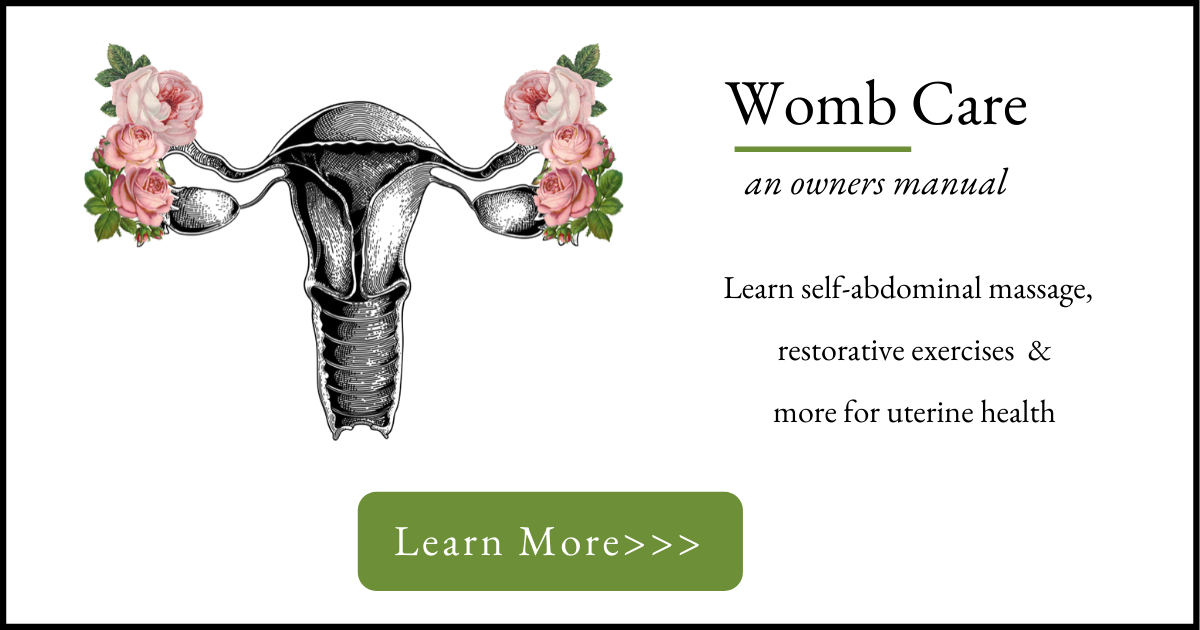


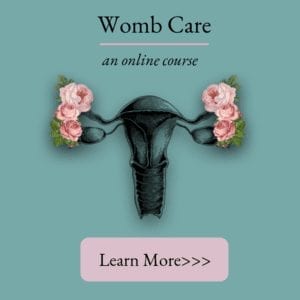
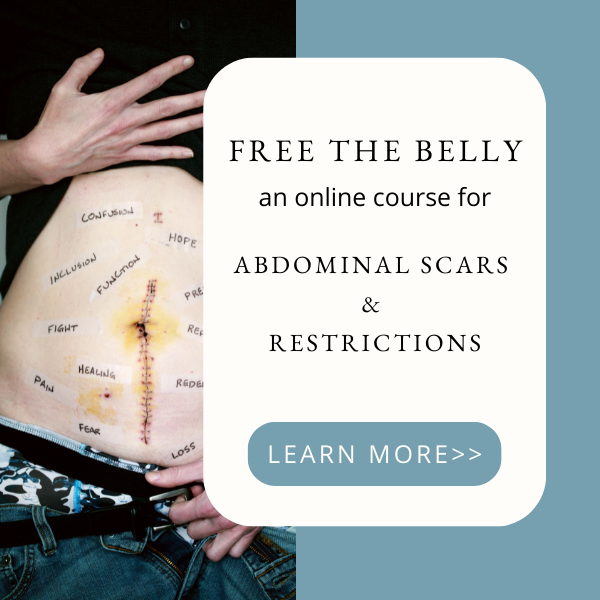

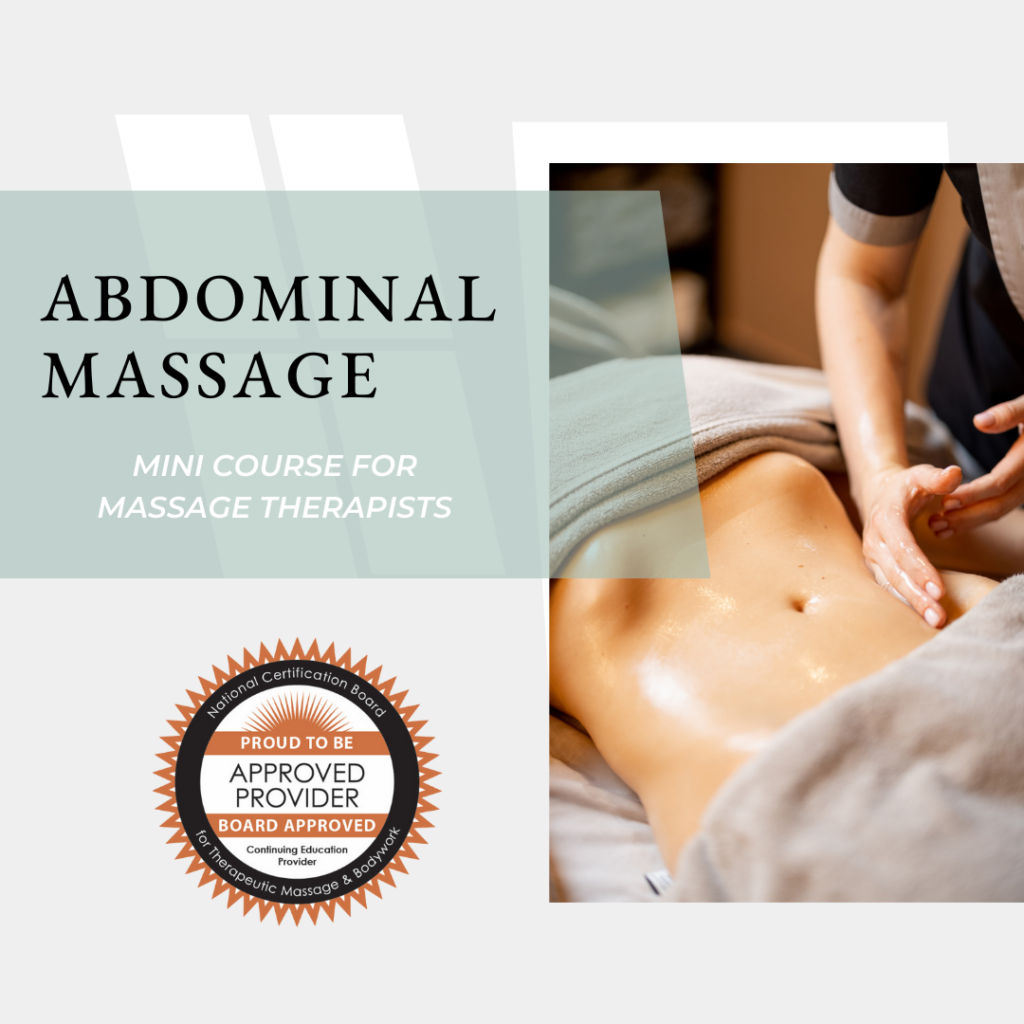
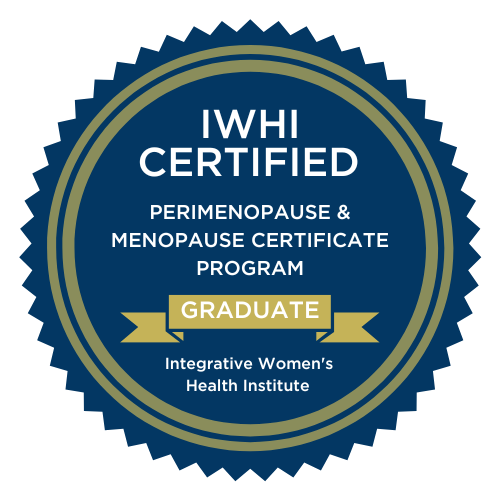
thank you for this very educational post. i didn’t know uterine ligaments have reflexogenic properties. very encouraging!